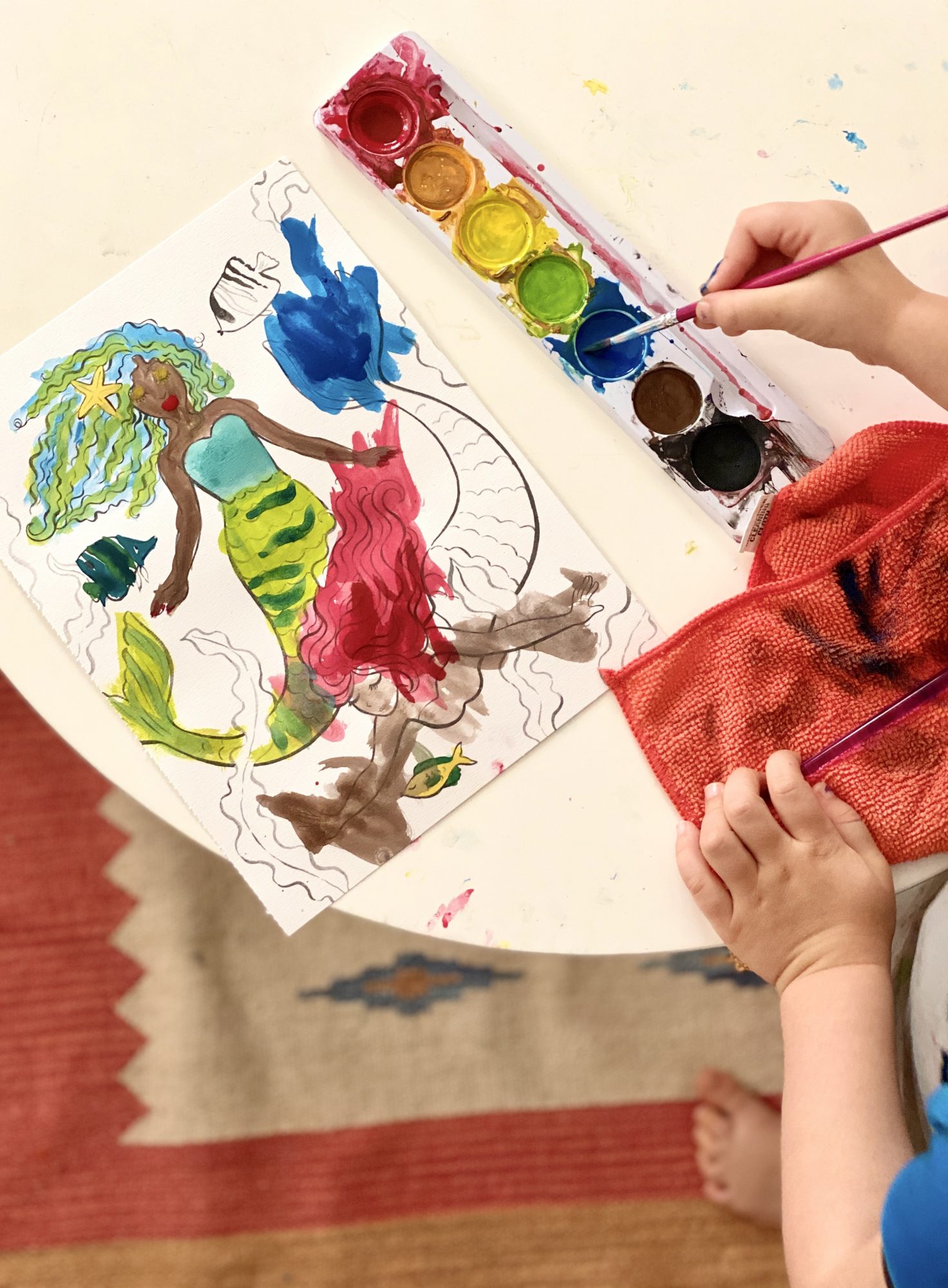
As a mother, it's long been a priority to teach my daughter that the notion of being "color blind" when it comes to diversity isn't enough, because it's not. But recently I found myself confused on the difference between race and ethnicity when attempting to explain racism to her. Turns out, these two common terms are often confused, and only after speaking to experts did I realize my own understanding of race vs. ethnicity was totally off base. (Who knew?!)
Here's what I learned, plus tips on how to explain the difference between race and ethnicity to kids in a simple and straightforward way.
What Is Race?
As I was filling out the U.S. Census, I recall being baffled that Hispanic and/or Latino was not listed under race. My confused state caused me to have feelings of anger, sadness, and defeat. Why wasn't my race an option? For as long as I could remember, I always thought that my race was Hispanic—but I was wrong.
According to the U.S. Census, race is "a person's self-identification with one or more social groups." Still confused? So was I, so I spoke with Traci Baxley, Ed.D., creator of Social Justice Parenting and mother of five biracial children to get a clearer idea of what race really means.
"Race is often defined as the characteristics that you can see, the outward physical make-up of someone, including skin color, hair texture, facial features, and eye color," Dr. Baxley explains. "A person does not choose race. It is assigned by society (socially constructed) based upon these physical features."
In other words, your race is determined by how you look. The U.S. Census outlines five categories of race: Black or African American, American Indian or Alaska Native, Asian, Native Hawaiian or other Pacific Islander, and White. All five races are determined by how we look.
What Is Ethnicity?
All this time, I was under the impression that my Hispanic ethnicity was my race. It's taken a lot of time and emotion to undo certain ideas I was raised thinking to be true. I am constantly unlearning, and educating myself so that my daughter can lead conversations about racism with intention.
"Ethnicity determines whether a person is of Hispanic origin or not," according to another vague (partial) definition derived from the U.S. Census. Again, I found myself needing a more thorough explanation.
In search of a true understanding of ethnicity, I took to my membership with The Conscious Kid, a nonprofit dedicated to equity and promoting healthy racial identity development in youth. While searching their Patreon, I found a great example that provided a clear understanding of ethnicity:
"I have a friend who was born in Korea to Korean parents, but as an infant, she was adopted by an Italian family in Italy," explained New York University sociology professor Dalton Conley when speaking to PBS about the difference between race and ethnicity for the program Race: The Power of an Illusion. "Ethnically, she feels Italian: She eats Italian food, she speaks Italian, she knows Italian history and culture. She knows nothing about Korean history and culture. But when she comes to the United States, she's treated racially as Asian."
Ethnicity is fluid and self-determined based on the social and cultural groups you identify with though learned aspects of your life. For example, my mother is from Peru, my father is from Mexico, but apparently my race is socially categorized as white. I identify my ethnicity as a brown Latina with indigenous Incan and Aztec roots.
"Ethnicity is the cultural practices, customs, and traditions that are learned and shared by a group of people—including language, nationality, heritage, religion, dress, and customs," Dr. Baxley explains.
Teaching Kids the Difference
It's never too early to start teaching your children about race and ethnicity. Research suggests, conversations about race often begin when children notice different characteristics of their appearances. This can be as early as preschool. For me, explaining race and ethnicity to my daughter who just turned three, started when she was 2-years-old. As she was learning to identify colors, she noticed that my skin was brown, and her skin was white.
When it comes to explaining the difference between race and ethnicity, Dr. Baxley shares a simple way to define things: "Race is what you see (physical traits), ethnicity is what you learn (cultural practices)."
Depending on your child's age, there's a variety of ways to help kids fully understand race, ethnicity, and what it means to be anti-racist. With the younger children, parents can start by diversifying their children's books and toys. My daughter has a variety of children's books featuring kids with different skin tones, facial features and hair. Books like Listening With My Heart and Islandborn, celebrate diversity and kindness.
When it comes to toys, skin tone markers have made it easier for my daughter to draw pictures of mommy, daddy, grandma, and abuela. And because of all our new conversations about race and ethnicity, when she plays with her brown skin toned doll, a recent birthday gift, she points out that it looks like mommy.
Sandra Burciaga Olinger is a blogger/content creator/new mom. She is the founder of Grimy Goods—L.A.'s premier music lifestyle blog. You can connect with her via her Instagram and her personal blog where she drops the real talk on her adventures though modern motherhood.

